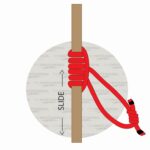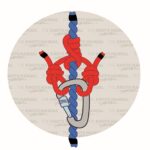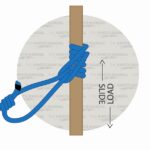The Bachmann Hitch is a popular slide and grip knot, used to ascend or descend a rope. It’s often used over a Prusik or a Klemheist Knot because the carabiner acts as a handle, which allows for easier sliding along the main rope.
Tying a Prusik’s Loop
To tie the Bachmann Hitch Knot, you’ll need a Prusik’s Loop and a carabiner. The Prusik’s loop should be made from a cord that’s 1/2 in diameter of the main rope. You can use factory-tied loops or create one yourself.
To create a Prusik’s Loop, cut the smaller cord to roughly 40 inches (1 meter) in length. If you want a longer loop, cut it 80 inches (2 meters) in length. Then tie the ends of them together with a Double Fisherman’s Knot, creating a closed loop in the process.
Quick Guide: Tying the Bachmann Hitch
To tie the Bachmann Hitch, pass the Prusik Loop through the carabiner. Then adjust the Double Fisherman’s Knot on the Prusik’s Loop so that it sits slightly above the bottom of the loop.
Place the carabiner upside down next to the main rope, and start tying many turns around the main rope and the carabiner. Place each next turn below the last one. You should make 3-5 turns in total, depending on how slippery the rope is.
Important Things to Watch Out
- Always lock the carabiner after you finish the last turn.
- Always check the knot first before using it. If needed, add more turns for more friction.
- The Double Fisherman’s Knot shouldn’t be incorporated in the turns. It should sit slightly above the bottom of the Prusik’s Loop.
- Don’t use the carabiner as a tie-in point. Instead, use the Prusik’s Loop.
- Before using it, always make sure that all the turns are sitting next to one another. If needed, adjust them and only then add weight to the loop.
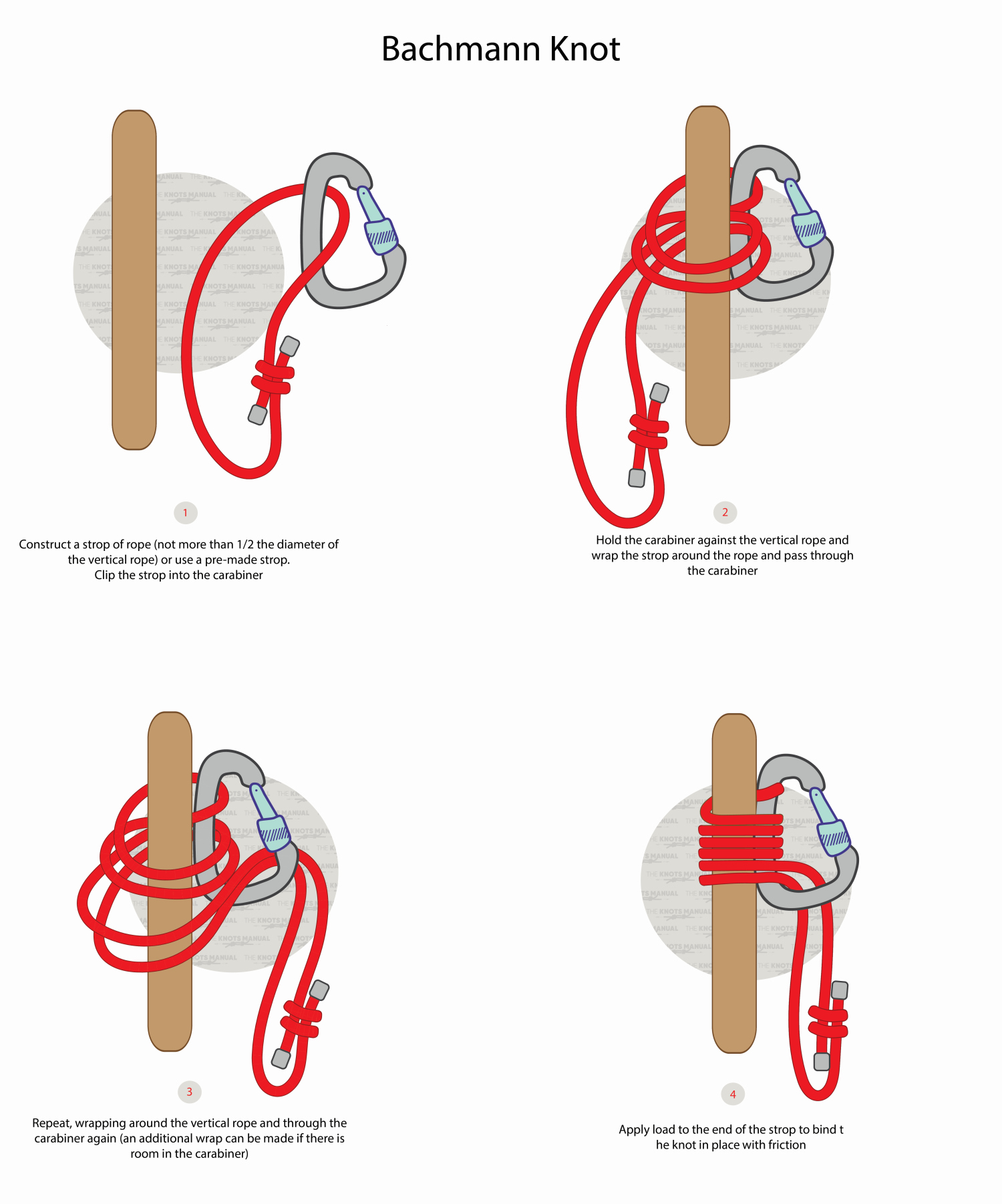
Pros and Cons of the Bachmann Hitch
The main benefit of the Bachmann Hitch is that it is very easy to tie and untie. It’s also easy to tie in cold weather when wearing gloves.
Another benefit is that the carabiner works as a handle for sliding the knot. This is useful if you’re ascending a long pitch or you’re using it to tie in gear.
It’s also a very secure slide-and-grip knot. It’s commonly used over the Prusik Hitch because it works well with icy and wet ropes. If more friction is needed, you can add more turns.
The only downside of the Bachmann Hitch is that it works only in one direction, unlike the Prusik Hitch which works in both directions. Also, if it isn’t loaded with weight, it loses all its friction very easily.
Common Uses for the Bachmann Hitch Knot
The Bachmann Hitch is used to ascend or descend a rope. Most commonly, it’s used in climbing, mountaineering, search and rescue, or by arborists.
By tying two Bachmann Hitches above one another, the person climbing the rope can use one as a foothold and the other to clip into their harness. It’s also often used as a backup system to mechanical ascending devices or as the only hitch for lifting/lowering gear.
Knots Like the Bachmann Hitch
Klemheist Hitch: A commonly used slide-and-grip knot that doesn’t need a carabiner. It provides a very good amount of friction and is easier to slide than most other slide-and-grip knots. One advantage over the Bachmann Hitch is that it doesn’t come loose as easily when not loaded with weight.
Prusik Hitch: A very commonly used slide-and-grip hitch knot, which works in both directions. It’s similarly secure to the Bachmann Hitch but doesn’t slide as easily.
Blake’s Hitch: A secure rope-end hitch used by arborists for climbing up trees. Because it doesn’t need a Prusik’s Loop, you can use it in a closed-loop system, using the same rope.
Distel Hitch: A slide-and-grip knot that doesn’t use a Prusik’s Loop, but does need a Lanyard cord with a fixed loop on each end. It’s very secure, and it’s especially useful for rappelling because it slides down very easily with one hand.
Valdotain Tresse Hitch: A more advanced slide-and-grip knot that looks like the Distel Hitch. It also requires a carabiner. It’s complicated, reliable, and slides easier than other slide-and-grip knots.
French Prusik (Autoblock) Hitch: A very commonly used slide-and-grip knot that needs a Prusik’s Loop but no carabiner.
Step-By-Step Guide: How to Tie the Bachmann Hitch Knot
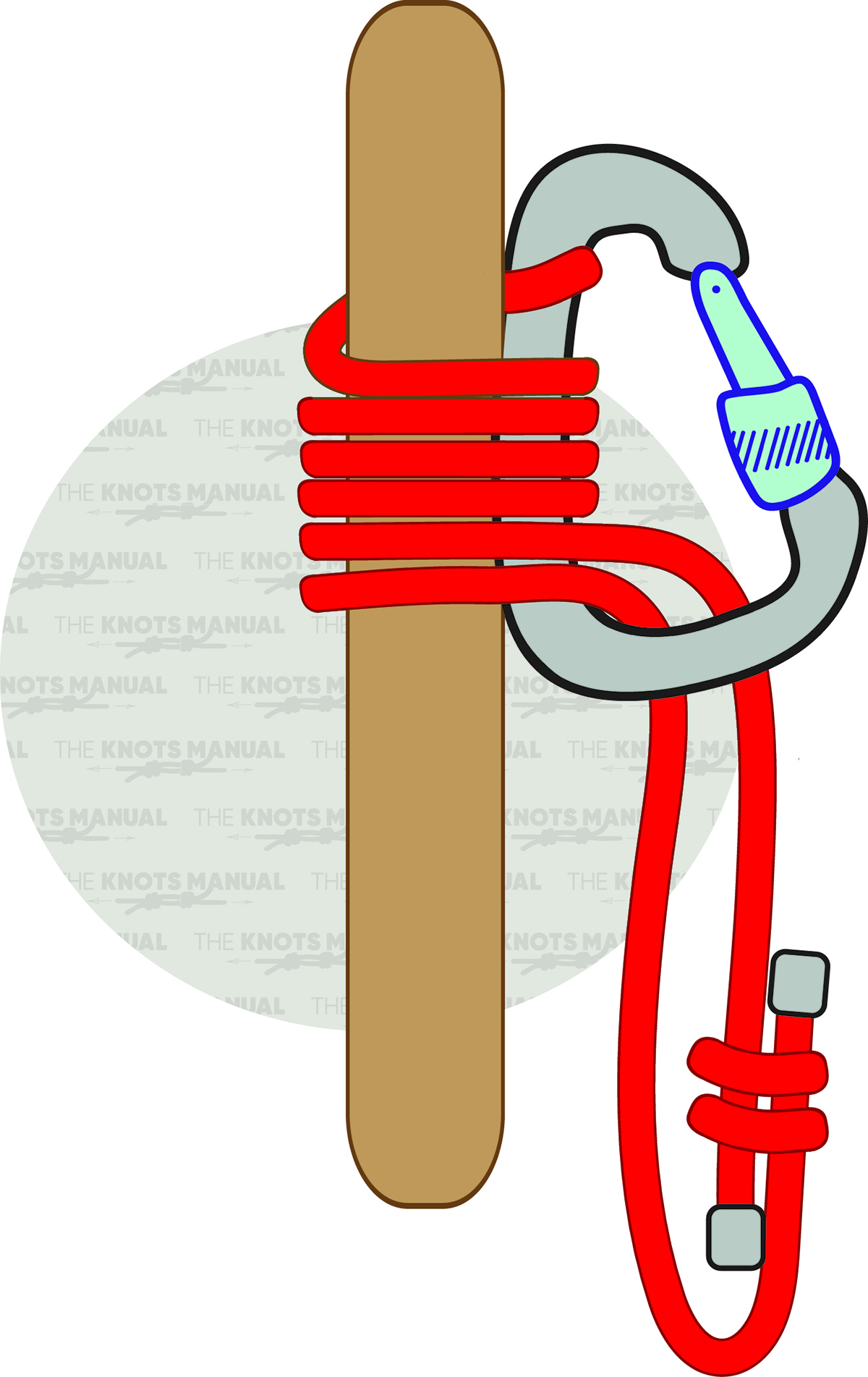
A step-by-step guide on how to tie a Bachmann Hitch Knot.
Step 1:
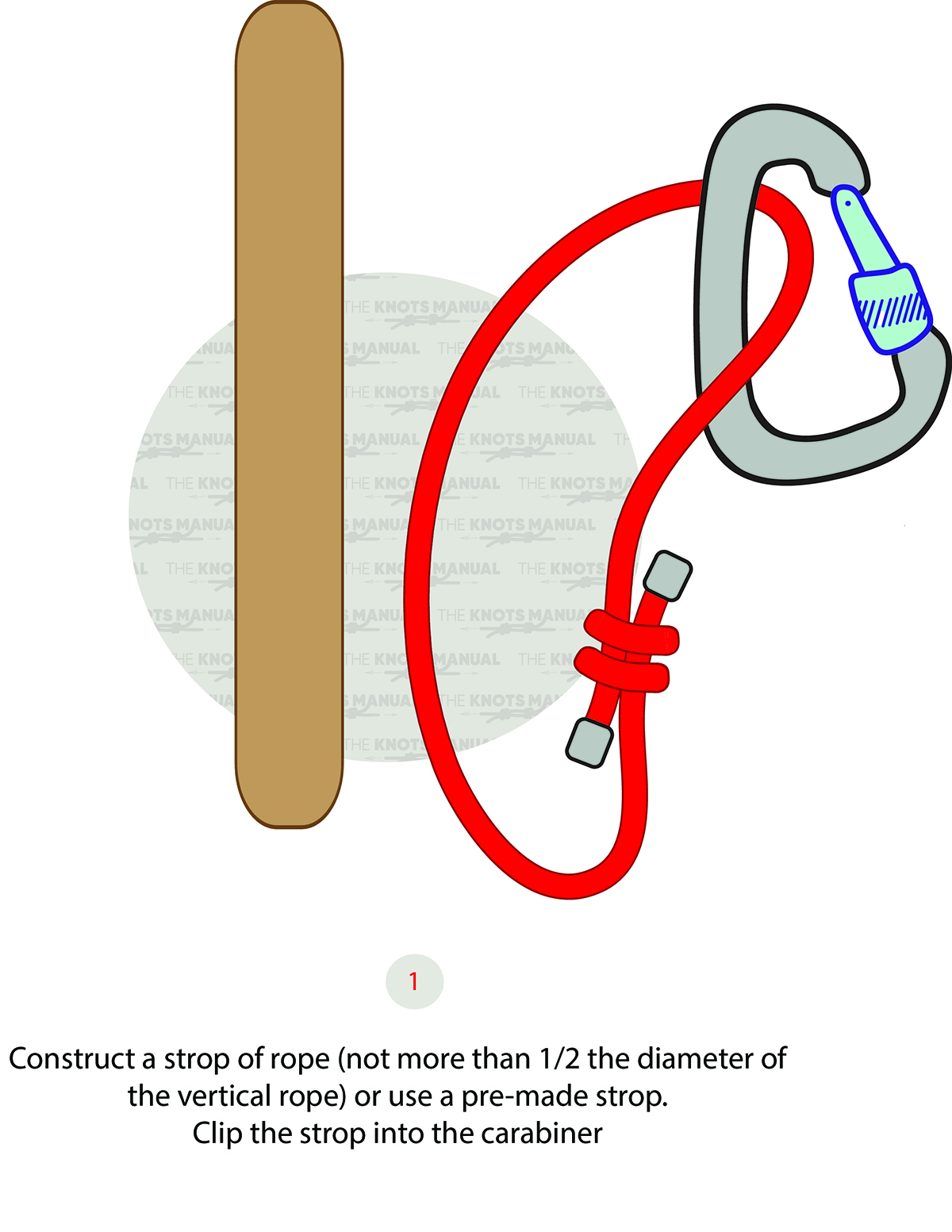
Use a factory-made or DIY Prusik’s Loop. It should be 20-40 inches (50-100 cm) in length and roughly half the diameter of the main rope. Pass one end of it through the carabiner. The knot that’s holding the Prusik Loop together should be placed a few inches above the bottom of the loop, as illustrated above.
Step 2:
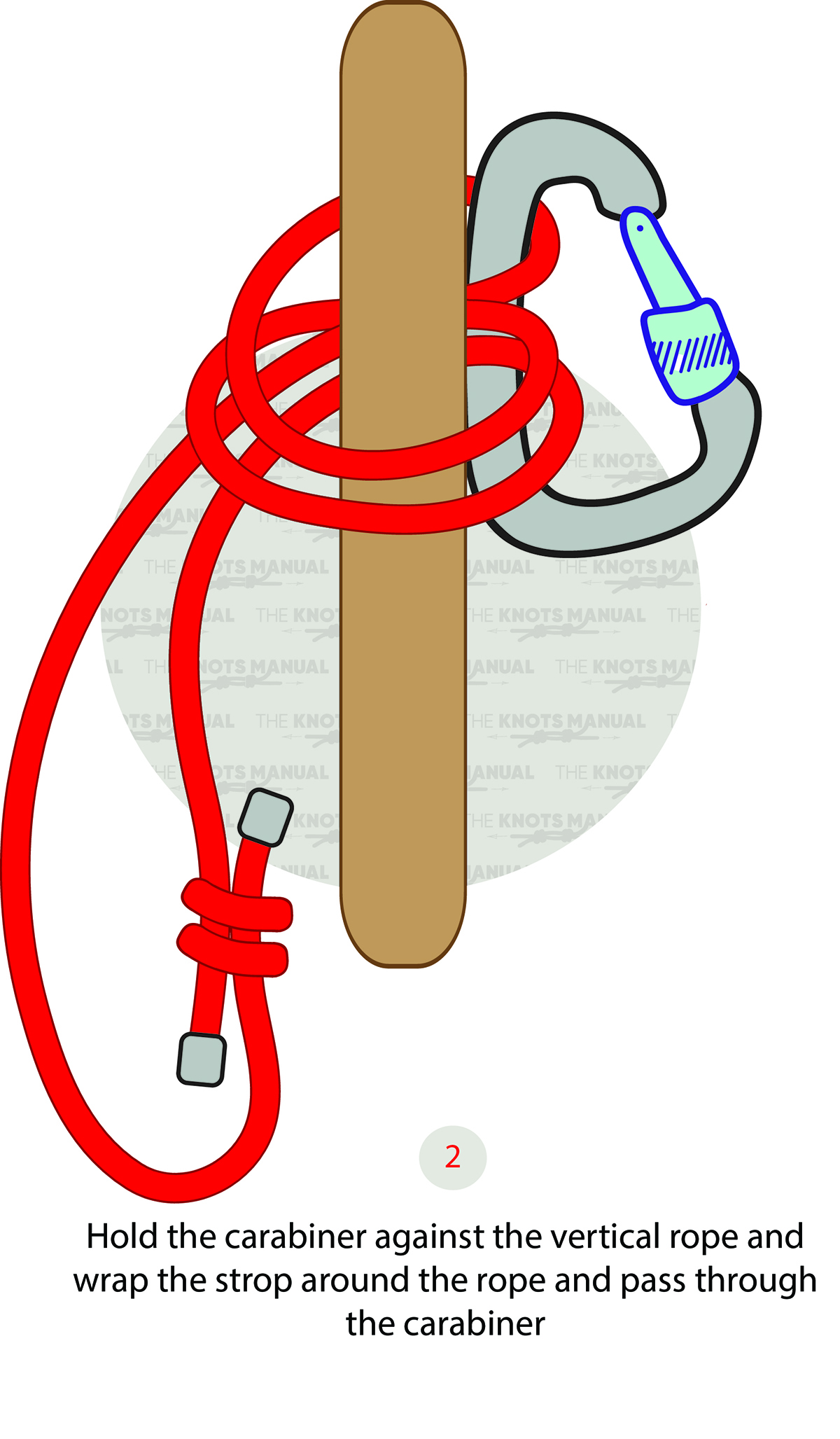
Place the carabiner next to the main rope, and start wrapping the free end of the Prusik’s Loop around both of them. Make sure to place each turn below the previous one – continuing in a downward direction.
Step 3:
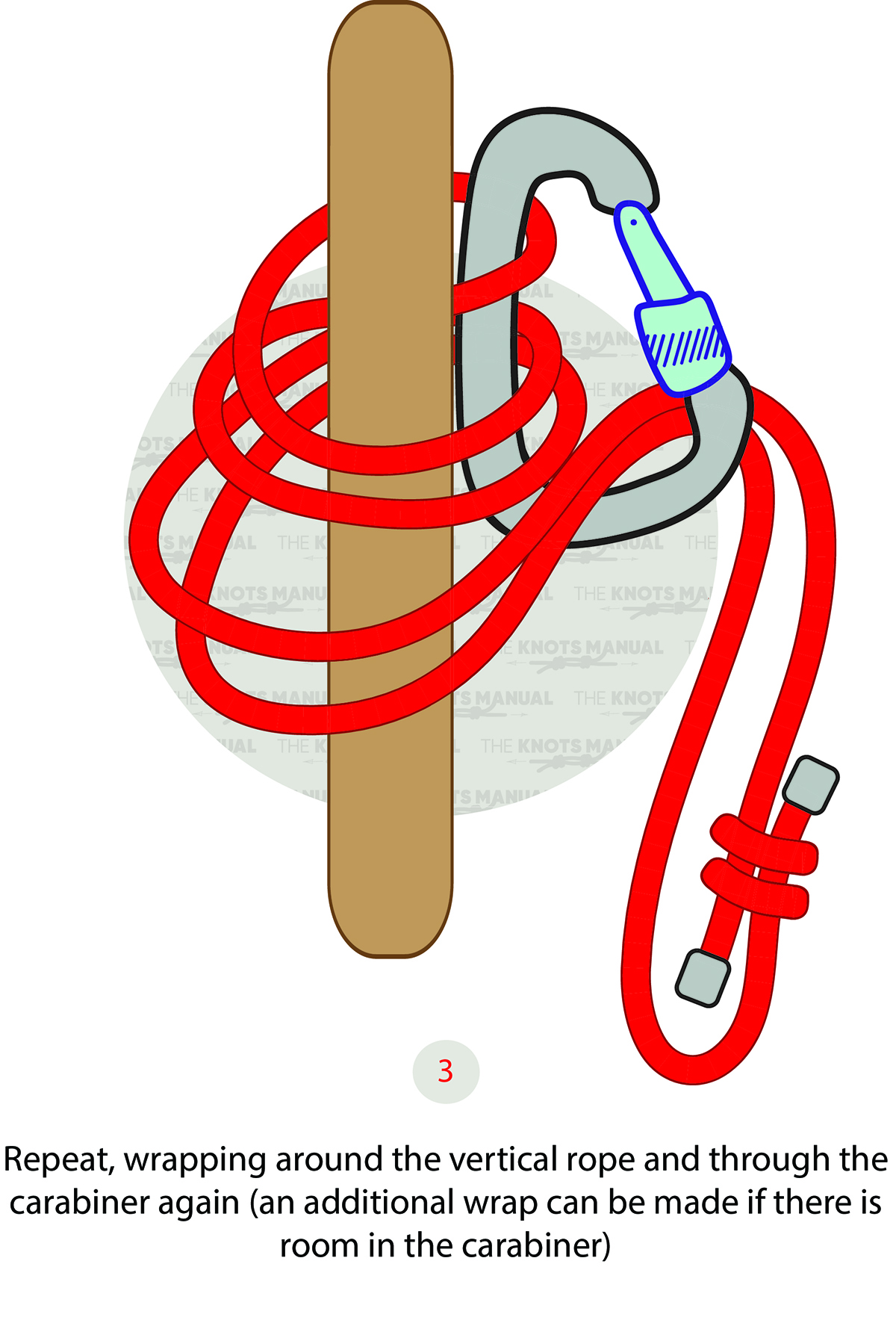
Do 3-5 turns in total around the main rope and the carabiner. More turns will result in better friction, but decrease its sliding properties.
Step 4:
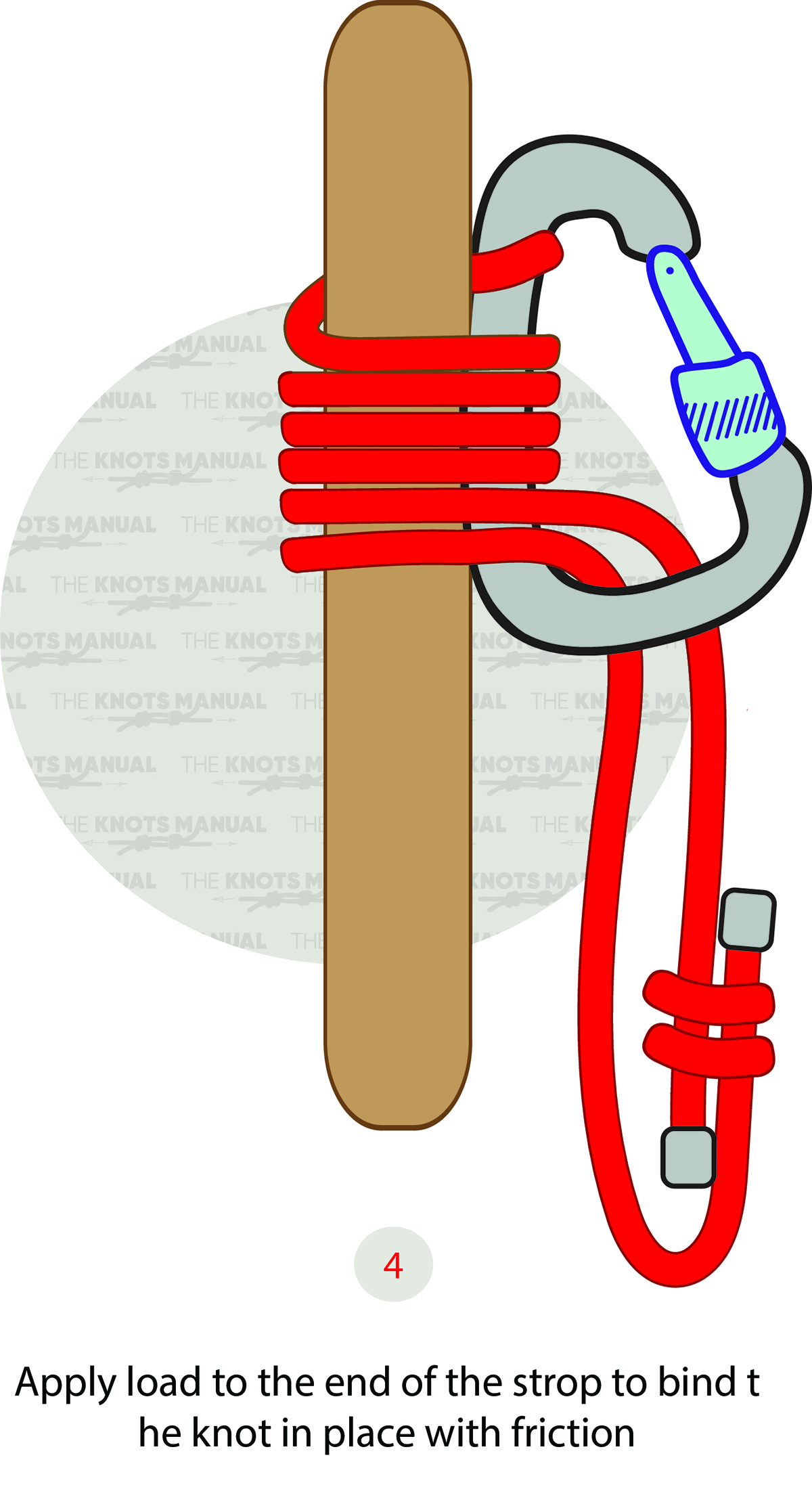
Adjust the knot as illustrated above, with each turn placed next to one another. Then add weight to the end of the Prusik’s Loop to tighten it.
